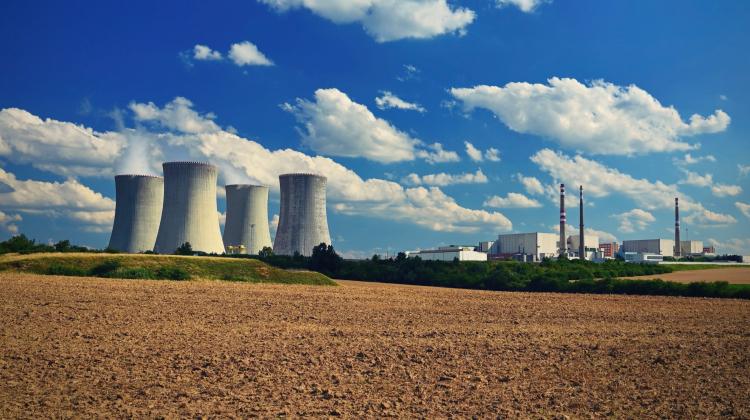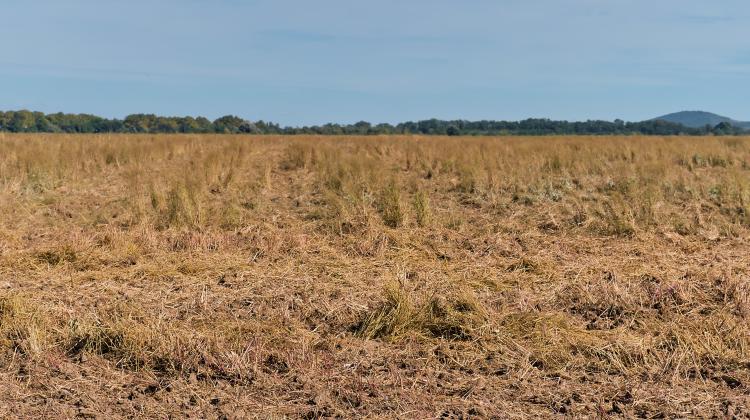Fires resulting from waste imports
There are two causes of fires at waste collection sites: external and internal. External - that is, the import of waste into Poland, and internal is the imbalanced needs of demand for waste disposal with the supply of facilities where this can be done, plus, of course, in both cases, the desire for a quick and large profit. Both causes are not a new matter, both have their roots in the relatively liberal EU law, which, in addition, in our country was applied very gently.
External cause (import of waste) - here we are mainly affected by the effects of the past. Until 2019, it was very easy in our country to obtain a permit for waste collection, storage or processing. All we had to do was submit the relevant documentation, which showed that we had the land and had the capacity. No one verified or controlled this before issuing the permit! With such a permit, you could go to Germany, Belgium, France or the UK and offer to pick up (as a business entity operating in the EU) certain waste (such as plastics) at a very competitive price.
Then this waste legally (from the point of view of international law and, above all, the law of the country from which the waste came) came to Poland and was stored on the premises of the warehouses of the bankrupt State Farm or Farm Circle, somewhere far away... Of course, the lessor of the warehouses was a company registered to a random person, preferably unemployed and homeless. And the profit going into millions of zlotys, claimed the organizer of the procedure . Just as the local government authorities were beginning to take an interest in the matter, "unexpectedly" on Friday night into Saturday the accumulated waste caught fire. In the "best" year - 2018 - there were 243 fires at waste storage sites, including the famous May 2018 fire in Zgierz. A similar mechanism was in place for hazardous waste, such as that from chemical production - here we have an obvious example from recent days - the fire in Zielona Gora.
The change in the law in 2019 has made such activity significantly more difficult and eminently less profitable. In order to obtain a permit today, the company must own the land, there must be a fire protection system there (verified by an expert), a monitoring system with cameras, and a deposit proportional to the amount of waste collected (to cover possible claims and damages), and above all, the operating site must be evaluated by environmental inspection specialists. As a result, the number of fires in 2021 has fallen to 62.
Problems with removal of illegal waste sites
But there are still many such waste storage sites left. Some estimates put the number at 400, others double that. In addition to the problem of determining the location of illegal waste storage sites, the biggest problem is identifying what is in the storage containers. At the time of collection of waste from the generator, documents are usually provided in a set that tell about the properties and chemical composition of the received waste - then rational decisions can be made about the method of disposal. When one embarks on the elimination of such an illegal waste storage site, it is necessary to perform analyses on virtually every container of waste to determine the optimal technology for its disposal. These analyses significantly increase the cost of decommissioning such an illegal landfill. It happens that the organizer of bringing waste to Poland earned, for example, 5 million zlotys, their disposal would cost, for example, 10 million zlotys, while the liquidation of the illegal landfill after years - as much as 20-25 million zlotys. The way to solve the problem today is one - to systematically search for and identify sites of illegal waste dumping, perform analyses and estimate disposal costs, and finally dispose of the waste - in most cases by thermal methods. Unfortunately, this is a lengthy and costly process that should take place with the support of the National Environmental Protection Fund.
Municipal waste fires
The cause of the second waste storage site fire, known as an internal cause, is to be found in the disproportion between the amount of combustible fraction separated from municipal waste generated and the capacity of the facilities where it can be safely burned. Annually, about 14 million tons of municipal waste are generated in Poland, of which about 5.5 million tons are collected selectively, and the remainder goes to a mechanical-biological processing (MBP) facility, where the so-called supersite fraction - the combustible fraction - is separated. Approximately 0.7 million tons of municipal waste goes directly to the 8 existing incinerators. MBP facilities produce about 4 million tons of combustible fraction, of which about 0.4 million tons are burned in existing incinerators, and about 1 million tons are used to prepare alternative fuel for cement plants. This leaves about 2 million tons of combustible fraction that has nowhere to be incinerated (not enough capacity in waste incineration plants), and which cannot be legally disposed of in landfills as of January 1, 2016. And this is where the "gray area" called temporary storage comes in - every year about 2 million tons are illegally stored somewhere and occasionally "unexpectedly" ignite on Friday night. This is the second cause of the fires.
How to solve the problem of burning waste?
A fire at an illegal waste disposal site is always a huge source of environmental pollution. Waste burns under air-limited conditions during a fire and this is a source of emissions of many toxic substances, including the highly carcinogenic polycyclic aromatic hydrocarbons led by benzo(a)pyrene, as well as dioxins and furans (polychlorinated dibenzo-p-dioxins and polychlorinated dibenzofurans). It is interesting to note that dioxin and furan emissions from incinerators in Poland are about 0.23% of national emissions, while fires in illegal landfills are up to approx. 10% of national emissions (unquestionably the first place is the burning of various types of fuels - coal, biomass, waste in domestic stoves - nearly 63%). Yes - emissions from illegal landfill fires are approx. 43 times greater than existing waste incinerators!
The problem of fires at temporary waste storage sites will not be solved without balancing the need for waste incineration with the availability of suitable facilities. There is no doubt that the target potential for municipal waste incineration capacity (the combustible fraction separated from the so-called residual waste remaining after selective collection, not recyclable) should be about 4.5 million tons in Poland (this is according to the balance sheet). This implies the construction of a dozen more plants with a total capacity of about 2 million tons. The program launched by the National Environmental Protection and Water Management Fund last year to subsidize the construction of such installations meets these expectations. It is worth noting here that under this program, Veolia of Lodz will build a plant with a capacity of about 200,000 tons per year solving almost entirely the problem of combustible fraction from municipal waste in the entire Lodz province. This will provide an opportunity to stabilize prices for waste collection from residents and prices for system heat supplied to Lodz residents by Veolia, while reducing emissions from EC-4 chimneys (emissions from waste incineration plants are many times lower than from the energetic burning of coal or biomass!).




